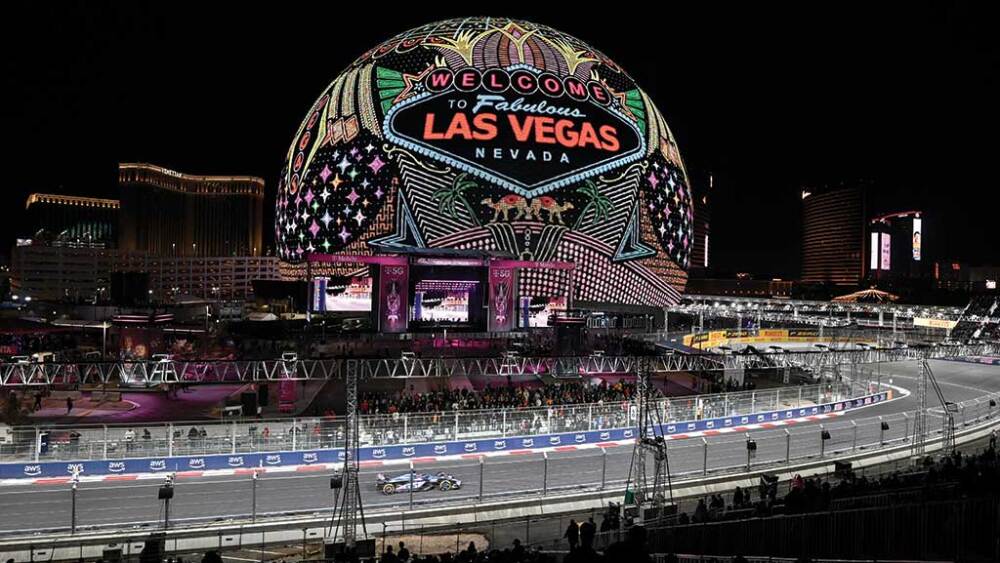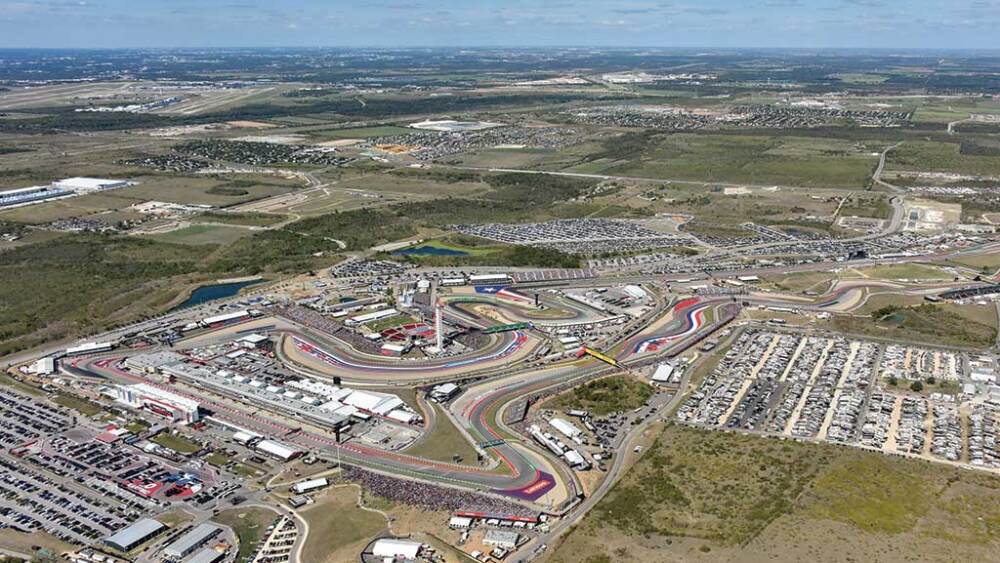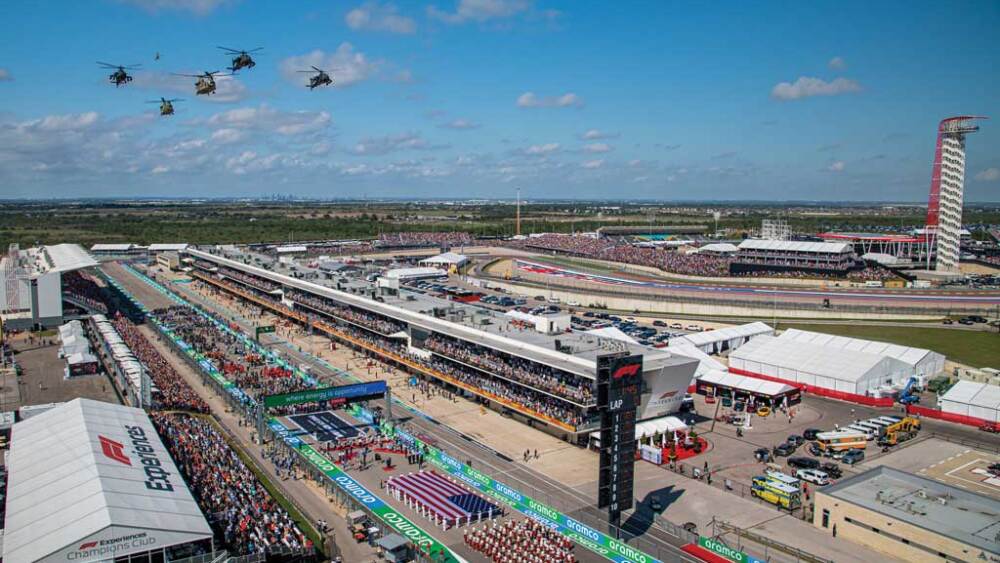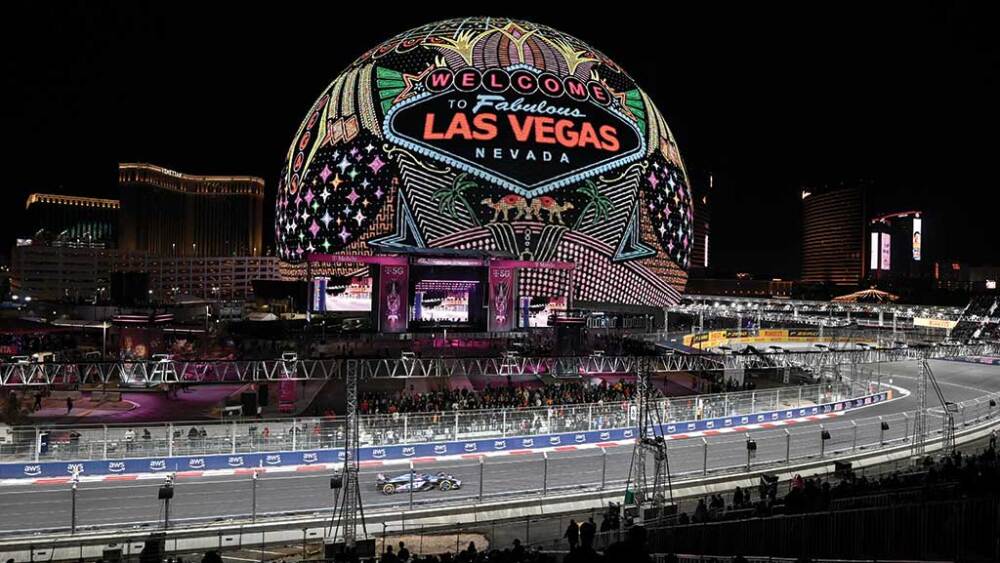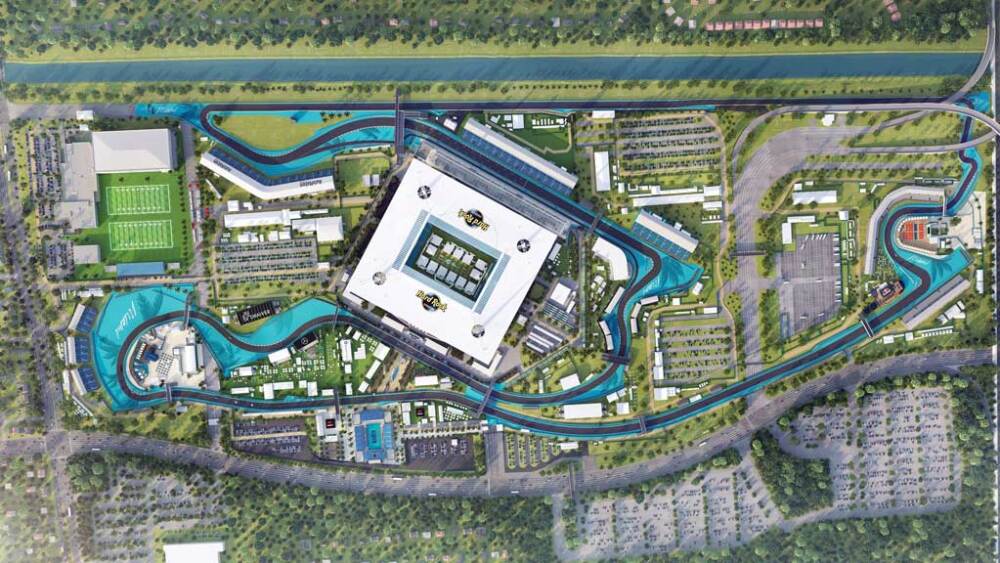Move over IndyCar. Formula 1 racing is finally gaining traction in the United States. Places as diverse as Las Vegas, Austin, and Miami (and their respective states) are reaping major economic windfalls from permanent and temporary grand prix racetracks, along with first-class fan amenities and facilities, for this international sport.
Long overshadowed by its popular American cousin IndyCar racing, F1 tried and failed for decades to establish a long-term foothold in the U.S., even staging grand prix in 17 cities over a 25-year period, but with only modest gains. Then came the Netflix docuseries Formula 1: Drive to Survive, giving America its first behind-the-scenes look at the global phenomenon known as F1.
In 2023 alone, races in Austin, Miami, and Las Vegas produced a combined economic impact of more than $3 billion. The most recent inaugural event in Las Vegas, which on its own produced an economic impact surpassing the recent Super Bowl LVIII (also held in Vegas) and has been dubbed the largest sporting event in city history.
“Obviously, the races are different in terms of their structure, layouts, and economics, but nonetheless very important to all three of those markets,” says Jeremy Aguero, principal with Las Vegas-based research firm Applied Analysis. “You’re talking about very substantial impacts for the communities.”
All three cities are experiencing remarkable financial returns from their alignment with F1. These events attract foreign visitors who follow the international racing circuits, and the new F1 venues have been designed as multipurpose entertainment hubs that draw local and tourist audiences year-round.
“There are now three eagerly anticipated races across [key U.S.] regions,” said Renee Wilm, CEO of the Las Vegas Grand Prix, and chief legal officer and chief administrative officer at Formula 1’s majority owner, Colorado-based Liberty Media Corp. “We are excited about the overwhelming enthusiasm from fans and are committed to sustaining this momentum.”
Pole position for Austin
Back in 2004, when rumors that a new Formula 1 circuit would be built near Austin, few pundits inside or outside the racing world believed it had even a slim chance of coming into existence, never mind finding success. At the time, the sport was controlled by British billionaire Bernie Ecclestone, who charged potential track owners and promoters tens of millions in fees for the privilege of hosting a race. If you had the money, your chances of hosting an F1 grand prix were quite good.
That F1 management structure changed in 2017, when Liberty Media, led by president and CEO Greg Maffei, purchased a controlling interest in the sport, valuing Formula 1 at around $8 billion. Among its top growth initiatives was to bring the sport to more cities in the U.S. Whereas Ecclestone preferred secrecy around F1’s operations, one of Liberty’s most effective moves was to promote the sport via Netflix and Drive to Survive. Now in season six, the series is largely credited with helping to grow the sport’s fan base dramatically, both in the U.S. and internationally.
A group of owners led by businessman Red McCombs had the money, 1,500 acres (607 ha) of suitable land just outside downtown Austin, and the commitment to put the city on the F1 map. In 2010, the group got a contract to hold the race through at least 2026. Texas also pitched in an initial $20 million from a fund designed to encourage tourism to the state. Construction was completed on the 3.4-mile (5.5-kilometer) Circuit of the Americas (COTA) in September 2012, making it the first purpose-built facility for hosting a U.S. round of the Formula 1 series.
Nearly 118,000 spectators watched the first U.S. Grand Prix at the facility in November 2012, and the event has grown in size and significance ever since, with a record 450,000 attendees during the most recent three-day event in October 2023. Last year’s race weekend produced $900 million in economic benefits to the city and state, according to COTA.
COTA Chairman Bobby Epstein says the key to the event’s success goes beyond the racing action. “We’ve created a ‘... something fun for everyone’ entertainment offering, with more than 36 hours of programming, fantastic atmosphere in the campgrounds, hills that allow spectators to see a lot of the track action, mega superstar concerts, and a track layout that uses the elevation changes to really test the drivers,” Epstein says. Austin itself also plays a leading role. “It’s a vibrant city large enough to excite and host visitors all race weekend long, but small enough to fully embrace the event as its own.”
In 2011, Austin-based Miró Rivera Architects was tasked with designing all of the facilities outside the racetrack proper. “At the time, people in the U.S. knew very little about Formula 1, and Austin didn’t even have a professional sports team,” says Juan Miró, principal in the firm. “We saw an opportunity to create a place for people to gather, and that is always welcome in a city.”
Bordered by the track on three sides, the Grand Plaza sits on a 27-acre (10.9 ha) space with a large reflecting pool and lawn. But the centerpiece at COTA is a 251-foot (76.5 m) observation tower, also designed by Miró Rivera Architects, with a top platform providing 360-degree views of the circuit and nearby downtown. “The tower became an icon and a destination,” Miró says. “Cities need those types of icons to help orient you to where you are; it becomes a reference point.”
The tower serves as the heart of the 14,000-person-capacity Germania Insurance Amphitheater. At the time of the venue’s
completion, no outdoor venue of its kind existed in the self-proclaimed “live music capital of the world.” In the last decade, COTA has become a fixture of Austin’s concert scene.
“The spirit of the design,” Miró says, “is about this up-and-coming dynamic city that is trying to express [its readiness] for this type of international attention and, at the same time, it is a venue that is about more than just racing. For us as architects, it was very important to create a place for the community to come together beyond the race.”
Viva Las Vegas
F1 had a series of fits and starts in Las Vegas over the decades, holding two races around a temporary circuit in the Caesars Palace parking lot in 1981 and 1982, but both events were poorly attended and not well received.
Hoping to capitalize on the recent popularity of the sport in America, Liberty Media did something completely outside the traditional F1 playbook by taking an ownership interest in building the track’s facilities and promoting the event in partnership with local resorts.
“We started to seriously explore the idea of a Formula 1 race in Las Vegas in 2020, and the vision became a reality very quickly, thanks to the support of Clark County and our founding partners, as well as the destination’s ability to host large-scale events,” says Wilm.
Liberty Media purchased a vacant 39-acre (15.8 ha) piece of land near the Strip for $240 million in 2022 and invested nearly $1 billion in infrastructure improvements around the 3.8-mile (6.1 km) track, including construction of a new three-story, 300,000-square-foot (27,870 sq m) pit building.
“We’ve repaved miles of public roadways and made improvements to public utilities with the intention of racing here for years to come while being good stewards of our permanent home here in Southern Nevada,” Wilm says.
The development process was almost as hectic and thrilling as the sport itself. “The race was a logistical triumph that required close coordination and collaboration with local officials and resort properties to turn our dream of transforming the Las Vegas Strip into a racetrack, into a reality,” Wilm says.
Transforming Las Vegas Boulevard into a state-of-the-art racing circuit in little time was no easy feat. “It was critical that we found solutions to maintain access to and from the resort corridor,” Wilm says. The strategy focused on such solutions as erecting temporary bridges to facilitate traffic and pedestrian movement and maintain access to businesses encompassed by the circuit footprint.
Did Formula 1’s gamble on Las Vegas pay off? The total economic impact on the city and the region was just under $1.5 billion, according to a study conducted by Applied Analysis. More than 316,000 fans attended during the race weekend, including 145,900 unique visitors to Las Vegas. According to Wilm, these visitors spent 3.6 times more money than typical Vegas traveler, totaling $884 million in spending over race week.
“From the analysis that we did, they met or exceeded expectations from an economic and fiscal standpoint,” Aguero says. He noted that more than $77 million in taxes were collected as a result of the race. “That’s just unbelievable, and the upside potential of the investment is pretty significant, both for Las Vegas and for Formula 1.”
The key ingredient for success was public/private partnership, according to Aguero. “It’s a triumph of these folks figuring out how to get things done, and it wasn’t easy. It was frustrating for residents, for public officials, and for Formula 1. The ability to pull off a global spectacle in 16 months that transformed one of the most iconic locations in the world was just an amazing feat and nothing short of remarkable.”
Miami’s vice
Formula 1 held its first race in South Florida in May 2022 at the purpose-built Miami International Autodrome circuit on the campus of the NFL Miami Dolphins, located in Miami Gardens. The race was the vision of Dolphins owner Stephen Ross, chairman of The Related Companies (the brains behind the huge Hudson Yards development in Manhattan), and Dolphins CEO Tom Garfinkel.
The event was held again in May 2023, and according to Aguero, the local economy benefited by $449 million from 2023’s race, an increase of 29 percent from 2022, which brings a total impact over the race’s first two years to $798 million. Visitor spending in the Greater Miami region during race week 2023 topped $195 million, and total attendance was up nearly 15 percent over 2022. The race also provided employment opportunities, with salaries and wages reaching $150 million—an increase of 41 percent from the first year of the race.
Build-out of the venue was led by Detroit-based design firm Rossetti, which had previously worked on the Miami Open tennis complex, also located on the Dolphins campus.
“I started with the analysis of what it means to be in Miami,” says CEO Matt Rossetti. “That had a big impact on how we would set the tone for the race. All the ideation had to reflect Miami. We also integrated what F1 means with the daringness and the spectacle and built out a series of experiences that would allow people to spend all day there, not just for the race.”
These experiences include an artificial marina complete with yachts, the Hard Rock Beach Club, and a luxuriously appointed Paddock Club with hospitality for VIPs. “You have got something for everybody.,” Rossetti says. “There is an experience at [every] financial and personal level.”
The F1 event also leverages the existing infrastructure of the Miami Dolphins NFL franchise, including the Hard Rock Stadium campus, as well as its organizational, promotional, and marketing divisions. “I have never seen such a well-oiled machine,” Rossetti says.
The Miami Grand Prix is on a 10-year contract through 2031. “The significance of the event is enormous,” Rossetti says. “Right now, it is by far the most highly sought-after ticket.”
Where to from here?
Although plans for a New York City-area F1 race have been floated for years, nothing substantive has, as yet, come to fruition, but other forms of motorsport are exploring similar urban inroads. American-based stock car racing series NASCAR is experimenting with urban street circuits. One of the most anticipated events on the 2023 schedule was the inaugural Chicago street race on July 7, which attracted 80,000 attendees and generated an estimated $109 million in economic impact, according to a report prepared by Temple University for the Chicago Sports Commission. The next Chicago street race is set for July 7, 2024.
All three U.S. F1 events look set to grow as the sport’s popularity increases. The success of Austin’s race is spawning even more development throughout the sprawling venue, including expansion into a full-scale amusement park called “COTALand,” with the first two roller coasters currently under construction. “The goal is to be a world-class entertainment destination unlike any other, with something to offer for everyone, both during race weekend and throughout the year,” Epstein says.

